BRITISH HISTORY
Celtic Britain
Celtic Britain refers to the period of British history during which the Celtic people, specifically the Britons, inhabited the island of Great Britain. The Celts were a diverse group of tribes that spoke a Celtic language and shared cultural practices. They arrived in Britain around the 8th century BCE and gradually spread across the island, eventually dominating the indigenous population.
The Celtic society in Britain was divided into small tribes, each led by a chief or king. They were largely an agrarian society, with many of the tribes relying on farming and animal husbandry for their livelihood. They also had a strong tradition of metalworking and were skilled in the production of iron and bronze weapons and tools.
The Celts were also known for their art and culture, which was heavily influenced by their religious beliefs. They had a complex pantheon of gods and goddesses and believed in the power of druids, who were considered to be the custodians of their religious and cultural traditions. The Celts were also skilled in the art of storytelling, which was an important aspect of their culture.
However, the Celtic Britain faced several challenges from the Roman Empire, which began its conquest of Britain in the 1st century CE. The Romans gradually conquered the Celts and established control over most of Britain. The Celts were forced to adopt Roman culture, language and customs.
Despite these challenges, Celtic culture and language managed to survive in Britain, particularly in the western and northern parts of the island. Today, many people in Wales, Scotland, and Cornwall still consider themselves to be of Celtic descent and continue to celebrate their Celtic heritage through music, dance, and festivals.
In conclusion, Celtic Britain was a significant period in British history, which saw the arrival and dominance of the Celtic people.
The Celts brought their own unique culture, language, and customs, which have had a lasting impact on the island and continue to be celebrated today. Despite the challenges faced by the Celts, particularly from the Roman Empire, their legacy has managed to survive and continues to be an important part of British culture and heritage.

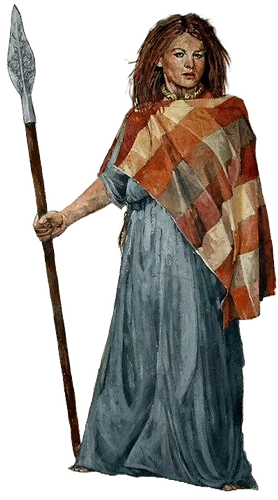
Roman Britain 43 - 410
Emperors during the occupation
Claudius (AD 41-54): Claudius was the Roman Emperor during the initial invasion of Britain in AD 43. He led the Roman army in a successful conquest of the island, and established the province of Britannia.
Vespasian (AD 69-79): Vespasian was the emperor when the Roman army under his command put down the rebellion led by the Celtic queen Boudica in AD 60 or 61. He also initiated a building program in Roman Britain, including the construction of forts, roads, and public buildings.
Hadrian (AD 117-138): Hadrian is known for his construction of Hadrian's Wall, a massive fortification built to separate Roman Britain from the barbarian tribes to the north. He also visited the island during his reign and made several important administrative changes to the province.
Antoninus Pius (AD 138-161): Antoninus Pius was known for his peaceful and stable reign, during which Roman Britain experienced a period of prosperity. He also continued the construction of Hadrian's Wall, adding to the fortifications and improving the infrastructure of the province.
Marcus Aurelius (AD 161-180): Marcus Aurelius was the emperor during a period of frequent barbarian invasions and rebellion in Roman Britain. He also had to deal with a major outbreak of plague which affected the Roman army and civilians.
Commodus (AD 180-192): Commodus was known for being a cruel and unstable emperor. He was less interested in the affairs of the empire and had a limited impact on the province of Britannia.
Septimius Severus (AD 193-211): Septimius Severus was the emperor during a period of increased conflict with the Caledonian tribes in Scotland. He led a successful campaign against them, but also initiated a policy of heavy taxation in Roman Britain, which caused some discontent among the population.
Constantine the Great (AD 306-337): Constantine was the first Roman emperor to convert to Christianity, and his reign marked a turning point for the religion in the empire. He also made administrative changes to Roman Britain, and ordered the construction of several public works projects throughout the province.
Theodosius (AD 379-395): Theodosius was the last emperor to rule a unified Roman Empire. During his reign, Roman Britain was increasingly under pressure from barbarian invasions, and by the end of his reign, Roman control over the province had largely collapsed.

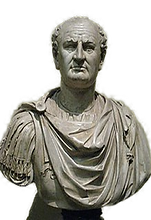

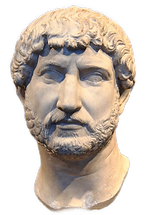
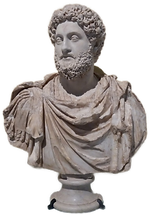
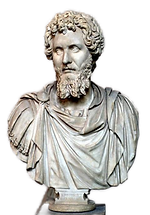

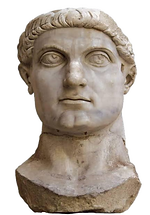
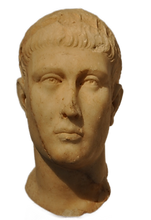
The Dark Ages 410 - 1066
The Dark Ages is a term used to describe the period of British history from the end of Roman rule in the 5th century to the Norman Conquest in 1066. This period is often referred to as the Dark Ages because of a lack of written records and historical documentation. However, recent archaeological discoveries have shed new light on this time period and have provided a more nuanced understanding of the society, culture, and events of the Dark Ages.
The end of Roman rule in Britain marked the beginning of the Dark Ages. The Roman withdrawal from the island in the early 5th century left a power vacuum that was filled by Germanic tribes such as the Angles, Saxons, and Jutes. These tribes migrated to Britain and established their own kingdoms, leading to the emergence of a new Anglo-Saxon society.
The Anglo-Saxon society was divided into three classes: the nobles, the freemen, and the slaves. The nobles were the ruling class, and they controlled the land and the military. The freemen were the farmers and merchants, and they formed the backbone of the economy. The slaves were the lowest class, and they were owned by the nobles.
The economy of the Anglo-Saxon period was primarily agricultural, with the main crops being wheat, barley, and oats. The Anglo-Saxons also raised cattle, sheep, and pigs. Trade was also an important part of the economy, with the Anglo-Saxons trading with other European countries such as Scandinavia, Germany, and the Byzantine Empire.
The Anglo-Saxon period saw the rise of Christianity in England, with the arrival of St. Augustine in 597 AD. This marked the beginning of the conversion of the Anglo-Saxon people to Christianity. Christianity brought a new religious and cultural influence to the island and also had a profound impact on the development of the English language, literature, and art.
One of the most significant events of the Dark Ages was the Viking invasions, which began in the late 8th century. The Vikings, who were primarily from Denmark and Norway, raided and plundered the Anglo-Saxon settlements along the coast. The Anglo-Saxons were unable to repel the Vikings, and they were forced to pay them large sums of money in exchange for peace.
The Dark Ages came to an end with the Norman conquest in 1066. William the Conqueror, the Duke of Normandy, invaded England and defeated the Anglo-Saxon king Harold Godwinson at the Battle of Hastings. The Norman conquest brought about significant changes to England, as the Normans introduced a new language, culture, and legal system.
Overall, the Dark Ages was a significant and formative period in English history. The Anglo-Saxons left a lasting impact on England, shaping its language, culture, and society. The period saw the rise and fall of powerful kings, the spread of Christianity, and the emergence of a distinct English identity. It was also marked by conflict and change, reflecting the dynamic nature of the Anglo-Saxon society and the times in which they lived.
In conclusion, the era was not a time of cultural and societal decline, but instead a time of great change and transformation. The end of Roman rule and the emergence of the Anglo-Saxon society marked the beginning of a new era in English history. The Anglo-Saxons left a lasting impact on the island, shaping its language, culture, and society. The period was marked by conflicts, invasions, and the spread of Christianity, but also by the emergence of a distinct English identity. Today, much of the legacy of the Dark Ages can still be seen in the modern-day Britain.
Some of the most notable rulers of this period include:
-
Aelle: A Saxon king who is said to have led the first Saxon invasion of Britain in 477 AD and established the Kingdom of Sussex.
-
Cerdic: A Saxon king who is said to have founded the Kingdom of Wessex in the early 6th century.
-
Penda: A powerful king of Mercia who ruled from about 626 AD to 655 AD, he is known for his resistance against the expansion of Northumbria.
-
Edwin: A powerful king of Northumbria who ruled from about 616 AD to 632 AD, he was the first Northumbrian ruler to convert to Christianity.
-
Oswald: A king of Northumbria who ruled from about 634 AD to 642 AD, he was a strong leader who expanded his kingdom and spread Christianity throughout the region.
-
Offa: A king of Mercia who ruled from about 757 AD to 796 AD, he was a powerful ruler who built Offa's Dyke, a large earthwork that separated Mercia from Wales.
-
Alfred the Great: He was king of Wessex from 871 to 899 AD, he fought against the Vikings and managed to keep their invasion at bay and established a stable and prosperous kingdom.
Vikings
The Viking Age in Britain began with raids on coastal towns and villages in the late 8th century. These raids soon escalated into large-scale invasions, as the Vikings established settlements across the country. This period of Viking rule in Britain lasted for over two centuries and saw the emergence of several key leaders who played a significant role in shaping the country's history. In this essay, we will examine the Viking leaders in Britain and their interactions with the Saxons.
One of the most notable Viking leaders in Britain was Ivar the Boneless, who led the Great Heathen Army that invaded the country in the late 9th century. Ivar was the son of the legendary Viking leader Ragnar Lothbrok, and his nickname came from his apparent physical disability. Despite this, Ivar was a skilled warrior and tactician, and he led his army in a series of devastating raids on Saxon towns and monasteries. He is said to have been responsible for the capture and execution of the Saxon king Aella, and he played a key role in the Battle of Edington, which saw the eventual defeat of the Vikings by the Saxons.
Another important Viking leader in Britain was Guthrum, who ruled over the Viking settlement at East Anglia. Guthrum is notable for his conversion to Christianity and his subsequent treaty with the Saxon king Alfred the Great, which established a peaceful coexistence between the two peoples. This treaty, known as the Treaty of Wedmore, divided the country into two parts: the Danelaw, which was ruled by the Vikings, and the rest of the country, which remained under Saxon control.
Harald Hardrada was another Viking leader who had a significant impact on Britain. Hardrada was a renowned warrior who had fought in battles across Europe before invading England in 1066. He believed that he had a legitimate claim to the English throne and challenged Harold Godwinson for the crown. Hardrada's army was defeated at the Battle of Stamford Bridge, but his invasion was a significant event in the lead-up to the Norman Conquest, which saw the end of Viking rule in Britain.
Throughout the Viking Age in Britain, the Vikings and Saxons had a complex relationship that was characterized by both conflict and cooperation. The Vikings were known for their raids on Saxon settlements and their brutal treatment of the Saxon population, but they also intermarried with Saxons and adopted aspects of Saxon culture. The Saxons, for their part, fought back against the Viking invaders but also traded with them and learned from their advanced technologies and agricultural practices.
In conclusion, the Viking Age in Britain was a period of significant change and conflict, marked by the emergence of several key leaders who played a crucial role in shaping the country's history. While the Vikings and Saxons had a complex relationship that was characterized by both conflict and cooperation, their interactions ultimately had a lasting impact on the country's culture and society. Today, the Vikings are remembered as fierce warriors and seafarers who left an indelible mark on the history of Britain.
The Medieval Period 1066 - 1485
KING WILLIAM I (1066-1087)
King William I of England, also known as William the Conqueror, was born in the 11th century in Normandy, France. He was the son of Robert I, Duke of Normandy and Herleva of Falaise. He married Matilda of Flanders in 1053 and had several children, including Robert Curthose, William II Rufus, and Henry I. He became the Duke of Normandy in 1035 and in 1066, he successfully invaded England and claimed the throne, becoming King William I. He implemented significant political and social changes in England, including the creation of a strong centralized government and the building of numerous castles and fortifications to secure his rule. He also introduced the Domesday Book, a comprehensive survey of the land and resources of England. William died in 1087 while on campaign in France.
KING WILLIAM II (1087-1100)
King William II of England, also known as William Rufus, was the third son of William the Conqueror and Matilda of Flanders. He succeeded his father as King of England in 1087. During his reign, he faced several rebellions, including one led by his own brother, Robert Curthose. He also had conflicts with the Church, including a dispute with Anselm, the Archbishop of Canterbury. Despite these challenges, he was able to maintain control of the kingdom and continued many of his father's policies. He also supported the growth of towns and trade, and built several fortifications, including the Tower of London. William II died in a hunting accident in 1100 and was succeeded by his younger brother, Henry I.
KING HENRY I (1100-1135)
King Henry I of England, was the fourth son of William the Conqueror and Matilda of Flanders. He succeeded his brother, William II, as king in 1100. During his reign, he faced several rebellions and challenges to his rule, including the revolt of his eldest son, Robert, who claimed the throne. He also had conflicts with the Church, including a dispute with Anselm, the Archbishop of Canterbury. Despite these challenges, he was able to maintain control of the kingdom and continued many of his brother's policies. He also supported the growth of towns and trade, and built several fortifications. He was also known for his legal reforms, including the creation of a system of common law and the Charter of Liberties, which limited the power of the king and protected the rights of the Church and the barons. He also married Adeliza of Louvain, his second wife, after his first wife Matilda of Scotland died in 1118. He had no surviving legitimate son, which caused a succession crisis after his death in 1135, leading to the civil war known as the Anarchy.
KING STEPHEN (1135-1189)
King Stephen of England was the grandson of William the Conqueror, through his son Stephen's son, Stephen of Blois. He reigned from 1135 to 1154. His reign was marked by a civil war, known as the Anarchy, between Stephen and his rival, Matilda, daughter of Henry I, for the right to the throne. Matilda was the wife of Geoffrey of Anjou, and had a strong claim to the throne as the only surviving legitimate child of Henry I, but Stephen was able to secure the support of the barons and was crowned king in 1135. The war between Stephen and Matilda lasted for nearly 20 years, during which both sides made several attempts to gain the upper hand, with neither side able to gain a decisive victory. Eventually, a compromise was reached and Stephen's son, Eustace, was passed over in favor of Matilda's son, Henry, who later became King Henry II.
MATILDA
Matilda, also known as the Empress Matilda, was the daughter of King Henry I of England and the wife of Geoffrey of Anjou. After the death of her father, she claimed the throne of England, but her claim was challenged by her cousin, Stephen of Blois, who seized the crown. Matilda's supporters, including her half-brother Robert of Gloucester, fought against Stephen's supporters in a civil war known as the Anarchy. Despite some early successes, Matilda was never able to secure the throne and eventually a compromise was reached, in which her son, Henry, would succeed Stephen as king. She returned to Anjou where she died in 1167.
KING HENRY II (1154-1189)
King Henry II of England was the son of Matilda, daughter of King Henry I of England, and Geoffrey of Anjou. He succeeded Stephen as King of England in 1154, after the civil war between Stephen and Matilda known as the Anarchy. He also inherited the Duchy of Normandy and other territories in France through his father, which made him one of the most powerful rulers in Europe.
During his reign, he implemented several administrative and legal reforms, including the creation of a system of common law and the development of a strong centralized government. He also expanded the royal domain and reduced the power of the feudal lords. He also had conflicts with the Church, including a dispute with Thomas Becket, the Archbishop of Canterbury, which ultimately ended in Becket's murder.
He also had several children, including his legitimate heir Richard the Lionheart, King of England, King Geoffrey II of Brittany, King John Lackland, King of England and King Henry the Young King. He died in 1189, leaving his kingdom in the hands of his sons, which led to a period of instability and conflicts known as the "Angevin Empire"
He is considered one of the most powerful and effective monarchs of medieval England.
KING RICHARD I (1189-1199)
King Richard I of England, also known as Richard the Lionheart, was the third son of King Henry II of England and Eleanor of Aquitaine. He succeeded his father as king in 1189. He is known for his military exploits, particularly his participation in the Third Crusade, during which he earned the nickname "Lionheart."
During his reign, Richard spent most of his time in the Holy Land and on the continent, leaving the administration of his kingdom in the hands of others. Despite his absence, he managed to maintain control of his territories and expand his power through alliances and military campaigns.
He also had a tumultuous relationship with his brothers and other nobles, leading to several rebellions against his rule. He was captured and imprisoned while on his way back from the Crusade and held for ransom.
He died from an infected arrow wound in 1199, during a siege of a castle in France. He left behind a mixed legacy, admired for his military prowess and chivalry, but criticized for his lack of attention to the affairs of his kingdom.
KING JOHN (1199-1216)
King John was the king of England from 1199 until his death in 1216. He was the fifth son of King Henry II and Queen Eleanor of Aquitaine, and he succeeded his brother King Richard the Lionheart. He is known for his role in the signing of the Magna Carta and his conflicts with the Church and the barons.
During his reign, King John faced several challenges, including conflicts with the Church, the barons, and the French king Philip II. He also faced economic problems and political opposition. He is perhaps best known for his role in the signing of the Magna Carta in 1215, a document that limited the power of the monarch and established basic rights and liberties for the people. Despite this, he did not abide by the terms of the Magna Carta and spent much of his reign in conflict with the barons who had forced him to sign it.
King John's reign was marked by a series of military defeats, including the loss of the Angevin Empire, which included the territories of Anjou, Maine, and Touraine in France. He also lost Normandy, which was a significant blow to his prestige and power. He was also excommunicated by the Pope and faced a rebellion led by his own barons, who invited Prince Louis of France to take the English throne.
King John's rule was also marked by a series of financial and administrative reforms, including the introduction of a new coinage and the establishment of a professional bureaucracy. However, his policies were not well received by the barons and led to further conflicts and resentment.
King John died in 1216, leaving behind a legacy of a ruler who struggled to maintain stability and control in his kingdom, and his reign ended in a civil war, leading to the rise of his son, King Henry III.
KING HENRY III (1216-1272)
King Henry III of England was the son of King John and Isabella of Angouleme. He succeeded his father as king in 1216 at the age of 9 and was under the regency of his mother and later, a series of regents until he came of age.
During his reign, Henry III faced several challenges, including a rebellion led by his own barons and the loss of much of his continental territories. Despite these difficulties, he was able to maintain control of his kingdom and implement several administrative and legal reforms.
He was also known for his piety and patronage of the arts and architecture, particularly the rebuilding of Westminster Abbey. He also had a long-standing conflict with Simon de Montfort, which led to the Battle of Evesham in 1265, which resulted in a decisive victory for Henry III.
He ruled for 56 years, one of the longest of any English monarch, and died in 1272, leaving the throne to his son, Edward I.
KING EDWARD I (1272-1307)
King Edward I of England, also known as Edward Longshanks, was the son of King Henry III of England. He succeeded his father as king in 1272. He is known for his military campaigns, particularly his conquest of Wales and his role in the Scottish Wars of Independence.
Edward I was a powerful and capable king, who sought to strengthen the royal authority and centralize the government. He implemented several administrative and legal reforms, including the Statute of Westminster, which clarified and codified the laws of the kingdom. He also summoned the Model Parliament in 1295, which included representatives of the nobles, knights, and towns.
He also had several military campaigns, the most significant one being the conquest of Wales, which he accomplished by building a network of castles and fortifications and by issuing the Statute of Wales in 1284. He also took part in the Scottish Wars of Independence, where he defeated William Wallace and John Balliol, but was unable to fully conquer Scotland. He died in 1307 while on campaign in Scotland, leaving the throne to his son, Edward II. He is remembered as a strong and effective king, who laid the foundations for the later success of the Plantagenet dynasty.
KING EDWARD II (1307-1327)
King Edward II of England, was the son of King Edward I of England. He succeeded his father as king in 1307. He is known for his conflicts with the nobility and his failure to deal effectively with the Scottish Wars of Independence.
During his reign, Edward II faced several rebellions, led by his own barons, including the Despenser War, which resulted in the banishment of his favorites, Hugh Despenser the Younger and Hugh Despenser the Elder. He also had conflicts with the Church, including a dispute with Pope John XXII over the appointment of bishops.
He also had a tumultuous personal life, with rumors of homosexuality, which led to his downfall and eventual deposition by his wife Isabella of France and her lover Roger Mortimer. He was eventually murdered in Berkeley Castle in 1327, possibly by having a red-hot poker inserted into his anus.
KING EDWARD III (1327-1377)
King Edward III of England, was the son of King Edward II of England and succeeded his father as king in 1327. He is known for his military campaigns, particularly the Hundred Years' War with France and his role in the development of the English common law.
During his reign, Edward III expanded and consolidated the royal power, and re-established the authority of the Crown after the turmoil of his father's reign. He also had several military campaigns, the most significant one being the Hundred Years' War with France, which began during his reign. He also reorganized the English army and navy, creating the longbow-wielding English Yeomanry and the powerful English navy. He also had a role in the development of the English common law through the appointment of judges and the establishment of the Court of Common Pleas. He died in 1377 and was succeeded by his grandson Richard II.
KING RICHARD II (1377-1399)
King Richard II of England, was the grandson of King Edward III of England and succeeded him as king in 1377. He is known for his conflicts with the nobility and his deposition by his cousin Henry Bolingbroke, who became King Henry IV.
During his reign, Richard II faced several rebellions, led by his own nobles, including the Peasants' Revolt in 1381 and the Lords Appellant rebellion in 1387. He also had conflicts with the Church and had several of his opponents executed. He also had a tumultuous personal life, including rumors of homosexuality and the execution of his uncle Thomas of Woodstock. He was deposed by his cousin Henry Bolingbroke in 1399 and was imprisoned in Pontefract Castle where he was murdered in 1400.
KING HENRY IV (1399-1413)
King Henry IV of England, was the son of John of Gaunt, Duke of Lancaster, and succeeded Richard II as king in 1399. He is known for his role in the deposition of Richard II and his conflicts with the Percy family and Welsh rebels.
During his reign, Henry IV faced several rebellions and challenges to his rule, including the rebellion led by the Percy family, known as the Percy Revolt and the rebellion led by Owain Glyndwr, known as the Glyndwr Rising in Wales. He also had conflicts with the Church and had several of his opponents executed. He also had a tumultuous personal life, including rumors of illegitimacy and the execution of his cousin and rival Henry Percy, Earl of Northumberland. He died in 1413 and was succeeded by his son Henry V.
KING HENRY V (1413-1422)
King Henry V of England, was the son of King Henry IV of England and succeeded him as king in 1413. He is known for his military campaigns, particularly the Hundred Years' War with France and his role in the development of the English common law.
During his reign, Henry V re-invigorated the Hundred Years' War with France, and achieved several major victories, including the Battle of Agincourt in 1415. He also secured the Treaty of Troyes in 1420, which recognized him as the heir of the French King Charles VI and regent of France. He also had conflicts with the Church, including a dispute with Pope Martin V over the appointment of bishops. He died in 1422, leaving behind a son, who became King Henry VI of England.
KING HENRY VI (1422-1461 & 1470-1471)
King Henry VI of England was the son of King Henry V of England and succeeded him as king in 1422 at the age of 9 months. He is known for his weak and ineffective rule, which led to the Wars of the Roses, a civil war between the House of Lancaster and the House of York for the control of the English throne.
During his reign, Henry VI faced several challenges, including a series of rebellions and the loss of much of the English territories in France. He also had conflicts with the nobles, and was unable to assert his authority effectively. He was also known for his piety and patronage of the arts and architecture, particularly the foundation of Eton College and King's College, Cambridge. He suffered from mental illness and was eventually deposed by his cousin, Edward IV, in 1461. He was imprisoned in the Tower of London and died there in 1471.
KING EDWARD IV (1461-1470 & 1471-1483)
King Edward IV of England was the son of Richard Plantagenet, Duke of York and succeeded Henry VI as king in 1461. He is known for his role in the Wars of the Roses and his successful reign.
During his reign, Edward IV restored stability to the kingdom after the turmoil of Henry VI's reign and expanded and consolidated the royal power. He also had a successful military career, particularly in the Wars of the Roses, where he defeated the Lancastrian forces and reclaimed the throne. He also had a tumultuous personal life, including rumors of illegitimacy and his secret marriage to Elizabeth Woodville. He died in 1483 and was succeeded by his son Edward V.
KING EDWARD V (1483)
King Edward V of England was the son of King Edward IV of England and succeeded him as king in 1483. He is known for his brief and controversial reign and his deposition by his uncle Richard III.
During his reign, Edward V faced challenges, including the controversy surrounding his legitimacy and the actions of his uncle Richard, Duke of Gloucester, who declared him illegitimate and took the throne for himself. He and his younger brother Richard were both imprisoned in the Tower of London and were never seen again, leading to speculation that they were murdered on the orders of Richard III.
KING RICHARD III (1483-1485)
King Richard III of England was the brother of King Edward IV of England and succeeded his nephew Edward V as king in 1483. He is known for his controversial and short reign, which ended in his defeat and death at the Battle of Bosworth Field in 1485.
During his reign, Richard III faced challenges, including rebellion and opposition from the nobles, particularly from Henry Tudor, Earl of Richmond, who defeated Richard's forces at the Battle of Bosworth Field and claimed the throne as King Henry VII of England.


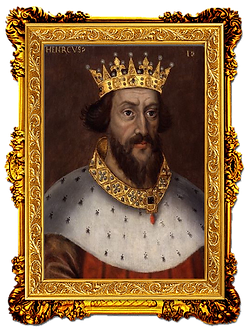
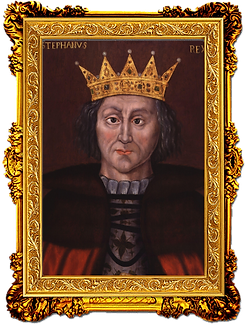

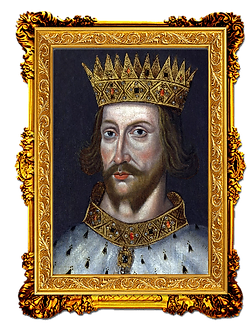

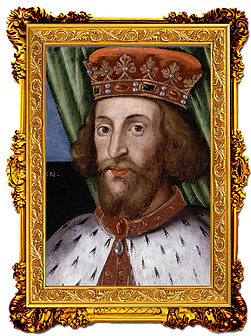
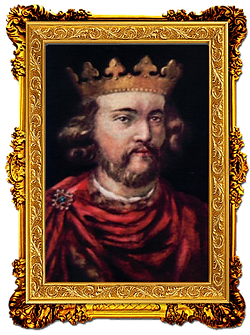

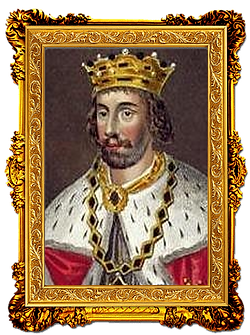
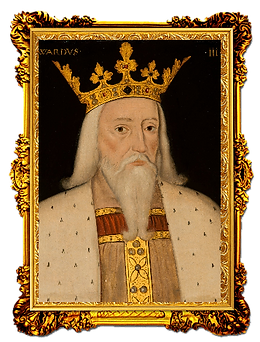
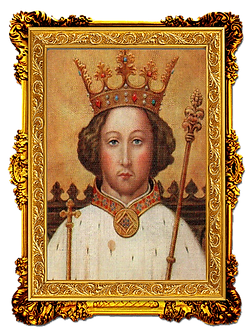
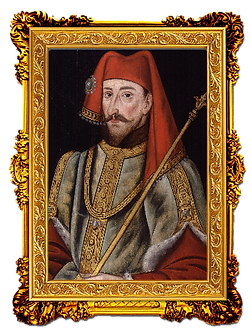



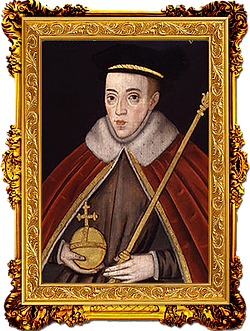

The Tudors 1485 - 1603
KING HENRY VII (1485-1509)
King Henry VII of England, was the son of Edmund Tudor, Earl of Richmond and Margaret Beaufort. He succeeded Richard III as king in 1485 after defeating him at the Battle of Bosworth Field. He is known for ending the Wars of the Roses, and founding the Tudor dynasty.
During his reign, Henry VII faced several challenges, including rebellions and opposition from the nobles, particularly from the Yorkists who still claimed the throne. He also had conflicts with Scotland and France. He implemented several administrative and financial reforms, including the establishment of a strong centralized government and the use of a professional standing army. He also had a successful foreign policy, which included the Treaty of Etaples with France and the Treaty of Perpetual Peace with Scotland. He also had a successful marriage with Elizabeth of York, daughter of King Edward IV, which united the houses of Lancaster and York, and provided a secure succession for the Tudor dynasty. He died in 1509 and was succeeded by his son, Henry VIII.
KING HENRY VIII (1509-1547)
King Henry VIII of England, was the son of King Henry VII of England and succeeded him as king in 1509. He is known for his role in the English Reformation and his many marriages.
During his reign, Henry VIII faced several challenges, including the Reformation and the Dissolution of the Monasteries. He also had conflicts with the Church, including a dispute with Pope Clement VII over his desire to annul his marriage to Catherine of Aragon. He also had several marriages, the most famous one being his marriage to Anne Boleyn, which led to the break with Rome and the establishment of the Church of England. He also had several children, including his legitimate heir, Edward VI, and his illegitimate son, Henry Fitzroy, Duke of Richmond. He died in 1547 and was succeeded by his son Edward VI.
KING EDWARD VI (1547-1553)
King Edward VI of England, was the son of King Henry VIII of England and his third wife Jane Seymour. He succeeded his father as king in 1547 at the age of 9 and was under the regency of a series of regents until he came of age. He is known for his role in the English Reformation and his short reign.
During his reign, Edward VI continued the policies of his father, including the English Reformation and the Dissolution of the Monasteries. He also implemented several religious and administrative reforms, including the introduction of the Book of Common Prayer and the establishment of a strong centralized government. He also had a tumultuous personal life, including his health problems and the power struggles among his advisors
LADY JANE GREY (1553)
Lady Jane Grey, also known as "The Nine Days' Queen," was a member of the Tudor dynasty and the great-granddaughter of Henry VII. She was born in 1537 and was the daughter of Henry Grey, the Duke of Suffolk. She was the cousin of King Edward VI and was considered a possible heir to the throne due to her being a descendant of Henry VII.
At the age of 15, she was married to Lord Guildford Dudley, the son of King Edward VI's chief advisor, John Dudley, the Duke of Northumberland. In 1553, King Edward VI died and named Lady Jane Grey as his successor, bypassing his half-sisters, Mary and Elizabeth.
Lady Jane Grey was declared queen on July 10, 1553, but her reign was short-lived. Queen Mary I, who was the legitimate heir to the throne, quickly gathered support and Lady Jane Grey was deposed after only nine days. She was arrested and later sentenced to death for high treason.
Lady Jane Grey was executed on February 12, 1554, at the age of 16. She has become a symbol of the dangers of political ambition and the tragedy of a young woman caught in the middle of a power struggle. Despite her short reign, she is considered one of the most important figures in the history of the Tudor dynasty and is remembered as a martyr for the Protestant cause.
QUEEN MARY I (1553-1558)
Queen Mary I of England, also known as "Bloody Mary," was the daughter of King Henry VIII and his first wife, Catherine of Aragon. She succeeded her half-brother, King Edward VI, as queen in 1553 and ruled until her death in 1558. She is known for her efforts to restore Roman Catholicism in England and her persecution of Protestant dissenters.
During her reign, Mary faced several challenges, including religious conflicts, economic problems, and political opposition. She also had conflicts with her husband, King Philip II of Spain, and dealt with several plots against her life. Despite these challenges, she was able to maintain stability and prosperity in her kingdom. She also had a successful foreign policy, which included the Treaty of Westminster with Scotland.
Mary I, who was a devout Catholic, had as one of her main goals the restoration of the Catholic religion in England. She attempted to do this by marrying King Philip II of Spain, a Catholic, and the persecution of Protestants, which earned her the nickname "Bloody Mary." It is estimated that around 300 people were executed for heresy during her reign. Her harsh policies and the lack of an heir led to her unpopularity among the population, and when she died in 1558, her half-sister Elizabeth I succeeded her.
QUEEN ELIZABETH I (1558-1603)
Queen Elizabeth I of England, was the daughter of King Henry VIII and his second wife, Anne Boleyn. She succeeded her half-sister Mary I as queen in 1558 and ruled until her death in 1603. She is known as the "Virgin Queen" and the "Elizabethan era" which is considered a golden age in English history.
During her reign, Elizabeth faced several challenges, including religious conflicts, economic problems, and threats from foreign powers, particularly Spain. She also had conflicts with the Catholic Church and dealt with several plots against her life. Despite these challenges, she was able to maintain stability and prosperity in her kingdom.
She also had a successful foreign policy, which included the defeat of the Spanish Armada in 1588 and the establishment of trade and diplomatic alliances. She also patronized the arts and supported the works of William Shakespeare, Christopher Marlowe and other writers, artists and musicians. She was also known for her intelligence, political acumen and her ability to rule as a strong, independent female ruler in a male-dominated society. She died in 1603 and was succeeded by James I of England.
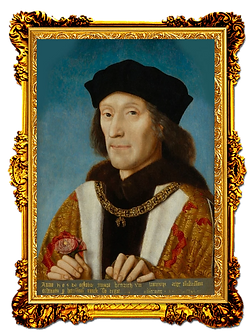





The Stuarts 1603 - 1714
(and Commonwealth)
KING JAMES I (of England, VI of Scotland) (1603-1625)
King James I of England was the son of Mary, Queen of Scots, and succeeded Queen Elizabeth I as king in 1603. He is known for his role in the Union of the Crowns, which united England and Scotland under one monarchy, and for his support of the arts and literature.
During his reign, James faced several challenges, including religious conflicts, economic problems, and political opposition. He also had conflicts with the Puritans and dealt with several plots against his life. Despite these challenges, he was able to maintain stability and prosperity in his kingdoms.
He also had a successful foreign policy, which included the Treaty of London with Spain and the Treaty of Edinburgh with Scotland. He also patronized the arts and literature, and supported the works of William Shakespeare, Ben Jonson, and other writers and poets. He also commissioned the King James Bible, which was completed in 1611. He died in 1625 and was succeeded by his son Charles I.
KING CHARLES I (1625-1649)
King Charles I of England was the son of King James I of England and succeeded him as king in 1625. He is known for his role in the English Civil War and his eventual execution in 1649.
During his reign, Charles faced several challenges, including religious conflicts, economic problems, and political opposition from the Parliament. He also had conflicts with the Puritans and dealt with several plots against his life. Despite these challenges, he was unable to maintain stability and prosperity in his kingdom. He dissolved the parliament several times and ruled with the help of his advisors, which led to a civil war between the royalists and the parliamentarians. He was eventually captured, tried and executed in 1649.
OLIVER CROMWELL (COMMONWEALTH) (1649-1660)
Oliver Cromwell (1599-1658) was an English military and political leader who served as Lord Protector of the Commonwealth of England, Scotland and Ireland from 1653 until his death. He came to power during the English Civil War, leading the parliamentarian forces against King Charles I. He was a key figure in the eventual execution of Charles and the establishment of the Commonwealth. Cromwell's rule was marked by religious and political turmoil, and he was eventually removed from power and replaced by Charles II.
KING CHARLES II (1660-1685)
King Charles II of England was the son of King Charles I of England and succeeded him as king in 1660. He is known for his role in the Restoration period and his support of the arts and sciences.
During his reign, Charles II faced several challenges, including economic problems, religious conflicts and political opposition. He also had conflicts with the Dutch Republic and dealt with several plots against his life. Despite these challenges, he was able to maintain stability and prosperity in his kingdom.
He also had a successful foreign policy, which included the Treaty of Dover with France and the Treaty of Breda with the Dutch Republic. He also patronized the arts and sciences, and supported the works of Sir Christopher Wren, Sir Robert Hooke, and other scientists and architects. He also restored the Royal Society and the Royal Observatory. He died in 1685 and was succeeded by his brother James II.
KING JAMES II (1685-1688)
King James II of England was the son of King Charles I of England and succeeded his brother Charles II as king in 1685. He is known for his role in the Glorious Revolution and his deposition in 1688.
During his reign, James faced several challenges, including religious conflicts, economic problems, and political opposition from the Parliament. He also had conflicts with the Dutch Republic and dealt with several plots against his life. Despite these challenges, he was unable to maintain stability and prosperity in his kingdom. He faced opposition from the Protestant nobility and was eventually deposed in the Glorious Revolution of 1688, which led to the accession of King William III and Queen Mary II to the throne.
KING WILLIAM III (1689-1702)
King William III of England, also known as William of Orange, was the son-in-law of James II and the husband of his daughter Mary II. He succeeded James II as king in 1688 as part of the Glorious Revolution. He is known for his role in the Glorious Revolution and his role in the Nine Years' War and the War of the Spanish Succession.
During his reign, William III faced several challenges, including religious conflicts, economic problems, and political opposition. He also had conflicts with France and dealt with several plots against his life. Despite these challenges, he was able to maintain stability and prosperity in his kingdom. He also had a successful foreign policy, which included the Treaty of Ryswick with France and the Treaty of Union with Scotland. He died in 1702 and was succeeded by his sister-in-law Queen Anne.
QUEEN MARY II (1689-1694)
Queen Mary II of England was the daughter of King James II and his first wife, Anne Hyde. She ruled jointly with her husband, King William III, from 1689 until her death in 1694. She is known for her role in the Glorious Revolution and her efforts to maintain stability and prosperity in England.
Mary II came to the throne after her father, King James II, was deposed in the Glorious Revolution of 1688. She and her husband, William III, were invited to take the throne by the English Parliament, which was dissatisfied with James II's rule.
During her joint reign with William III, Mary II faced several challenges, including religious conflicts, economic problems, and political opposition. Despite these challenges, she was able to maintain stability and prosperity in her kingdom. She also had a successful foreign policy, which included the Treaty of Ryswick with France and the Treaty of Union with Scotland.
Mary II was a popular figure and was well-liked by the people. She was very influential in the government, acting as a mediator between William III and the English Parliament. She died of smallpox in 1694, leaving William III to rule alone. Her death was a great loss to the country, and her death was deeply mourned by both the English people and the Dutch.
QUEEN ANNE (1702-1714)
Queen Anne of England was the last of the Stuarts to rule the kingdom and was the second daughter of James II. She succeeded her brother-in-law King William III in 1702. During her rule, she faced several challenges, including religious conflicts, economic problems, and political opposition. She also had conflicts with France and dealt with several plots against her life. Despite these challenges, she was able to maintain stability and prosperity in her kingdom. She also had a successful foreign policy, which included the Treaty of Utrecht with France. She died in 1714 and was succeeded by King George I of the House of Hanover, marking the end of the Stuart dynasty.
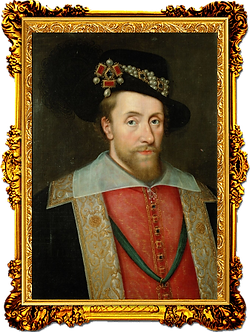
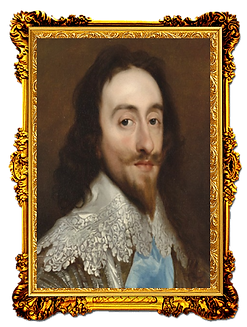
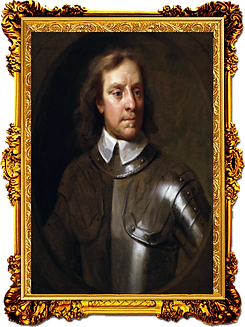

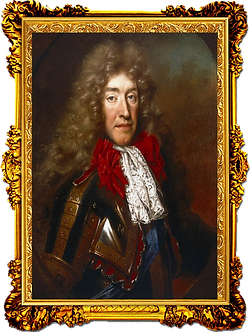
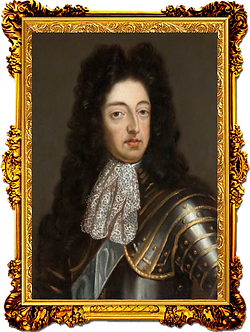
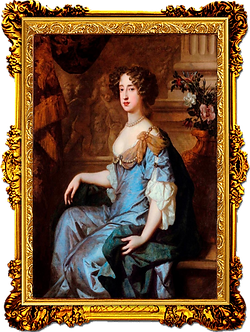

The Georgian Period 1714 - 1830
KING GEORGE I (1714-1727)
King George I of England was the first monarch of the House of Hanover, who succeeded Queen Anne in 1714. He is known for his role in the establishment of the Hanoverian dynasty and his conflicts with his son, George II.
During his reign, George I faced several challenges, including religious conflicts, economic problems, and political opposition. He also had conflicts with France and dealt with several plots against his life. Despite these challenges, he was able to maintain stability and prosperity in his kingdom. He also had a successful foreign policy, which included the Treaty of Utrecht with France and the Quadruple Alliance. He was not particularly interested in ruling and spent most of his time in Hanover, leaving the administration of the country to his ministers. He died in 1727 and was succeeded by his son, George II.
KING GEORGE II (1727-1760)
King George II of England was the son of King George I and succeeded him as king in 1727. He is known for his role in the War of Jenkins' Ear and the War of the Austrian Succession and his conflicts with his son, Frederick, Prince of Wales.
During his reign, George II faced several challenges, including religious conflicts, economic problems, and political opposition. He also had conflicts with France and Spain and dealt with several plots against his life. Despite these challenges, he was able to maintain stability and prosperity in his kingdom. He also had a successful foreign policy, which included the Treaty of Aix-la-Chapelle with France and Spain. He was the last British monarch to lead his army into battle at the Battle of Dettingen in 1743. He died in 1760 and was succeeded by his grandson, King George III.
KING GEORGE III (1760-1820)
King George III of England was the grandson of King George II and succeeded him as king in 1760. He is known for his role in the American Revolution and the loss of the Thirteen Colonies, as well as for his mental health issues later in his reign.
During his reign, George III faced several challenges, including economic problems, political opposition, and the loss of the Thirteen Colonies to the revolutionary forces in America. Despite these challenges, he was able to maintain stability and prosperity in his kingdom, and he had a successful foreign policy, which included the Treaty of Paris in 1783, which ended the American Revolutionary War. He also faced personal challenges, including bouts of mental illness, which led to a regency during the later years of his reign. He died in 1820 and was succeeded by his son, King George IV.
KING GEORGE IV (1820-1830)
King George IV of England was the son of King George III and succeeded him as king in 1820. He is known for his extravagant lifestyle, his role in the Regency era, and his conflicts with his wife, Caroline of Brunswick.
During his reign, George IV faced several challenges, including economic problems and political opposition. He also had conflicts with his wife and dealt with several scandals during his reign. Despite these challenges, he was able to maintain stability and prosperity in his kingdom. He also had a successful foreign policy, which included the Congress of Verona in 1822. He died in 1830 and was succeeded by his brother, King William IV.
KING WILLIAM IV (1830-1837)
King William IV of England was the son of King George III and succeeded his brother George IV as king in 1830. He is known for his role in the Reform Act of 1832, which expanded voting rights and for his short reign.
During his reign, William IV faced several challenges, including economic problems and political opposition. He also had conflicts with his wife, Adelaide of Saxe-Meiningen and dealt with several scandals during his reign. Despite these challenges, he was able to maintain stability and prosperity in his kingdom. He also had a successful foreign policy, which included the Treaty of Unkiar Skelessi in 1833. He died in 1837 and was succeeded by his niece, Queen Victoria.





Queen Victoria 1830 - 1901
QUEEN VICTORIA (1837-1901)
Queen Victoria of England was the daughter of Prince Edward, Duke of Kent and Strathearn, and the niece of King William IV. She succeeded him as queen in 1837 and ruled for 63 years, the longest of any British monarch. She is known for her role in the Victorian era and the expansion of the British Empire.
During her reign, Victoria faced several challenges, including economic problems and political opposition. She also dealt with several scandals during her reign, including the death of Prince Albert, her husband, in 1861. Despite these challenges, she was able to maintain stability and prosperity in her kingdom, and she had a successful foreign policy, which included the expansion of the British Empire and the Treaty of Nanking in 1842, which ended the First Opium War with China. She also had a significant influence on the social and cultural developments of her era, known as the Victorian era, characterized by industrialization, urbanization, and the growth of a middle class. She died in 1901 and was succeeded by her son, King Edward VII.

The 20th Century Onwards
KING EDWARD VII (1901-1910)
King Edward VII of England was the son of Queen Victoria and Prince Albert, and he succeeded his mother as king in 1901. He is known for his role in the Edwardian era and his efforts to improve relations with other countries.
During his reign, Edward VII faced several challenges, including economic problems and political opposition. He also had conflicts with his wife, Alexandra of Denmark and dealt with several scandals during his reign. Despite these challenges, he was able to maintain stability and prosperity in his kingdom, and he had a successful foreign policy, which included the Entente Cordiale with France in 1904 and the Anglo-Russian Entente in 1907. He was also known for his efforts to improve relations with other countries and to promote peace and understanding among nations. He died in 1910 and was succeeded by his son, King George V.
KING GEORGE V (1910-1936)
King George V of England was the son of King Edward VII, and he succeeded him as king in 1910. He is known for his role in World War I, the Russian Revolution, and the Irish War of Independence.
During his reign, George V faced several challenges, including economic problems, political opposition, and the outbreak of World War I. He also had to deal with the Russian Revolution, the Irish War of Independence, and several other crises. Despite these challenges, he was able to maintain stability and prosperity in his kingdom, and he had a successful foreign policy, which included the Treaty of Versailles in 1919, which ended World War I. He also made several changes to the royal family, including changing the name of the royal house from Saxe-Coburg and Gotha to Windsor. He died in 1936 and was succeeded by his son, King Edward VIII.
KING EDWARD VIII (1936)
King Edward VIII of England was the son of King George V and he succeeded him as king in 1936. However, he abdicated the throne later that year to marry Wallis Simpson, an American divorcee. He is known for his role in the Abdication Crisis and his short reign.
During his short reign, Edward VIII faced significant challenges and opposition to his proposed marriage to Wallis Simpson. Despite his efforts to gain the support of the government and the public, he was unable to overcome the constitutional and social obstacles to his marriage. He chose to abdicate the throne in December 1936, in order to marry Simpson. He was succeeded by his brother, King George VI.
After his abdication, Edward VIII was given the title of Duke of Windsor and he and his wife were exiled from court and public life. He spent the rest of his life in relative obscurity, primarily in France and the Bahamas. He died in 1972.
KING GEORGE VI (1936-1952)
King George VI of England was the son of King George V and brother of King Edward VIII. He succeeded him as king in 1936 after the Abdication Crisis. He is known for his role in World War II and his efforts to unite the country during a time of crisis.
During his reign, George VI faced several challenges, including World War II and the ongoing threat of Nazi Germany. He also had to deal with the economic problems and political opposition. Despite these challenges, he was able to maintain stability and prosperity in his kingdom and he had a successful foreign policy. He made several efforts to unite the country and to boost morale during the war. He also made several changes to the royal family, including the renaming of the royal house from Saxe-Coburg and Gotha to Windsor. He died in 1952 and was succeeded by his daughter, Queen Elizabeth II.
QUEEN ELIZABETH II (1952-2022)
Queen Elizabeth II of England was the longest-reigning monarch in British history. She succeeded her father, King George VI, in 1952 and was on the throne for over 70 years. She was known for her role in the Cold War, the decolonization of the British Empire, and the modernizing of the British monarchy.
During her reign, Queen Elizabeth II faced several challenges, including the Cold War, the decolonization of the British Empire, and the ongoing threat of terrorism. She also had to deal with economic problems and political opposition. Despite these challenges, she was able to maintain stability and prosperity in her kingdom. She had a successful foreign policy, which included the Commonwealth of Nations and the Special Relationship with the United States. She also modernized the monarchy, making it more accessible and relevant to the people. She was a symbol of continuity and stability throughout her long reign and saw 13 prime ministers and major historical events such as the end of the Cold War and the rise of technology.
KING CHARLES III (2022 - present)
King Charles III was born on November 14, 1948, as Charles Philip Arthur George, the eldest son of Queen Elizabeth II and Prince Philip, Duke of Edinburgh. He was educated at Cheam and Gordonstoun schools before attending Trinity College, Cambridge, where he earned a degree in anthropology, archaeology, and history.
Throughout his life, Charles has been known for his interests in environmental sustainability, architecture, and the arts. He has been a vocal advocate for conservation and has worked to promote sustainable practices in the business world. He has also been a patron of numerous arts organizations, including the Royal Shakespeare Company and the Royal Opera House.
Charles married Lady Diana Spencer on July 29, 1981, in a ceremony watched by millions around the world. They had two sons, Prince William and Prince Harry, before their divorce in 1996. Charles later married Camilla Parker Bowles in 2005, and she became the Duchess of Cornwall.
Charles has taken on many official duties throughout his life, including representing the British monarchy on numerous state visits and engagements. He has also served as president or patron of over 400 organizations, including the British Red Cross, the Prince's Trust, and the Royal Society of Arts.
As the longest-serving heir apparent in British history, Charles became King of the United Kingdom and the Commonwealth Realms on the death of his mother, Queen Elizabeth II, on September 8, 2022. He took the regnal name Charles III, and his coronation is expected to take place in the near future.
As King, Charles III is expected to continue his philanthropic work and advocacy for environmental sustainability. He will also serve as a figurehead for the United Kingdom and the Commonwealth, representing the country on the world stage and performing numerous ceremonial and constitutional duties.






